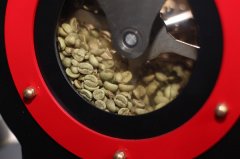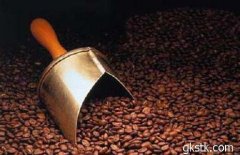Brief introduction of Ice drop Coffee and its production method

Ice drop coffee, also known as water drop coffee, ice brewed coffee, is a way to make coffee drinks. Ice drop coffee uses ice to extract coffee, which is a slow process that often takes hours, so ice drop coffee is more expensive.
Principle.
The principle of ice-brewed coffee is that it is extracted bit by bit by the melting of ice cubes due to the nature of the coffee itself melting with water. The coffee extracted has different flavor according to the roasting degree, water quantity, water temperature, droplet speed, grinding thickness and other factors.
Special features
Coffee powder is 100% low-temperature soaked and moist, the extracted coffee taste is strong, smooth, rich, admirable, and the flavor is outstanding. Adjust the speed of water droplets, use cold water to slowly drip, with a low temperature of 5 degrees Celsius, leak for a long time, so that the original flavor of coffee can be reproduced naturally.
The advantage of ice drop coffee is not sour and does not hurt the stomach, because using this method to make coffee, most of the coffee beans selected are deep-roasted coffee beans such as Manning, because "shallow roasting is sour, deep roasting is bitter but strong", therefore, ice drip coffee is not sour. Another reason for choosing deep-roasted coffee beans is that iced coffee will be diluted with ice cubes, so deep-roasted beans must be selected to filter so as not to be strong enough.
The reason why the taste of dripping coffee is not astringent is that cold water is used, and hot water is often used in other coffee brewing, while hot water with too high temperature will break down some chemicals in the coffee and release astringency, while waterdrop coffee is completely filtered with cold water. The coffee is 100% wet, and the extracted coffee tastes smooth but not sour.
Coffee pot
Ice drop coffee maker was invented in the Netherlands, also known as Dutch iced coffee drip filter, 3-4 layers of glass containers on the wooden seat, placed in the glass window at the door, the spectacle with a little mystery. The upper layer of the Dutch iced coffee drip filter is a container of ice cubes, ranging from 500cc to 3000cc according to capacity.
Manufacturing method
Production steps:
1. Grind the special ice drop coffee beans with a 2-3 scale grinder.
2. Put the filter screen at the bottom of the extraction bottle
3. Pour the coffee powder into the extraction bottle and straighten out the coffee powder.
4. Place the extraction bottle on the top of the collection bottle, and then put the drip plate on the top of the extraction bottle.
5. Prepare ice cubes and filter pure water and pour into the water storage ball at the ratio of 1:1.
6. Turn on the control switch to wet the surface of coffee powder evenly.
7. Adjusting the throttle valve to 40-60 drops per minute is the most appropriate.
8. Finish the production and enjoy.
Extraction secret
1. The ratio of coffee powder to ice water is about 1: 12: 20, which can be determined according to personal preference.
2. In order to increase the contact area between coffee powder and water, the submergence degree of coffee powder is better between siphon type and filter type.
3. Because of the long extraction time, it is suitable for eating deep-roasted coffee beans, high-grade pure coffee or ice drop special coffee beans.
4. one of the keys to the success or failure of ice-dripping coffee is dripping filtrate, and a slow dripping rate of about 7 drops in 10 seconds is the best. Water and coffee powder have a long time fusion, coffee taste is more saturated; if the filtration time is too fast, the taste is too light, at the same time will produce stagnant water overflow, on the contrary, too slow will make coffee ferment, produce sour taste and wine taste.
Important Notice :
前街咖啡 FrontStreet Coffee has moved to new addredd:
FrontStreet Coffee Address: 315,Donghua East Road,GuangZhou
Tel:020 38364473
- Prev

Coffee roasting: roasting process, roasting degree and roasting curve
When we pour the coffee beans at room temperature into the drum of the roaster after preheating, the temperature in the drum will be pulled down quickly and sharply, and the heat accumulated inside will be absorbed by the coffee beans and cause water evaporation. One minute to a few minutes later (the reheating time is related to preheating temperature, heating source, drum design, raw bean quantity, etc.), as the bean table loses moisture, coffee
- Next

Detailed explanation of coarse and fine grinding degree of coffee powder
The thickness of coffee powder is related to the amount and speed of coffee ingredients released when brewing coffee. Generally speaking, the thickness of coffee powder can be divided into: coarse powder, medium powder, medium powder, fine powder, very fine powder, five grades, is a little dizzy, ha, it doesn't matter! As soon as you look at the comparison picture and the reference, you can instantly understand the thickness, and you can't use so many different thicknesses at ordinary times.
Related
- Beginners will see the "Coffee pull flower" guide!
- What is the difference between ice blog purified milk and ordinary milk coffee?
- Why is the Philippines the largest producer of crops in Liberia?
- For coffee extraction, should the fine powder be retained?
- How does extracted espresso fill pressed powder? How much strength does it take to press the powder?
- How to make jasmine cold extract coffee? Is the jasmine + latte good?
- Will this little toy really make the coffee taste better? How does Lily Drip affect coffee extraction?
- Will the action of slapping the filter cup also affect coffee extraction?
- What's the difference between powder-to-water ratio and powder-to-liquid ratio?
- What is the Ethiopian local species? What does it have to do with Heirloom native species?

